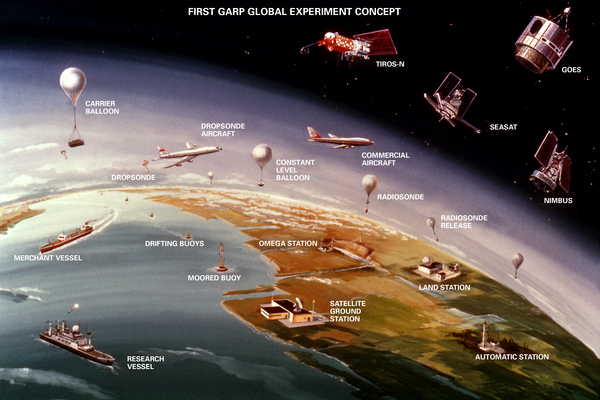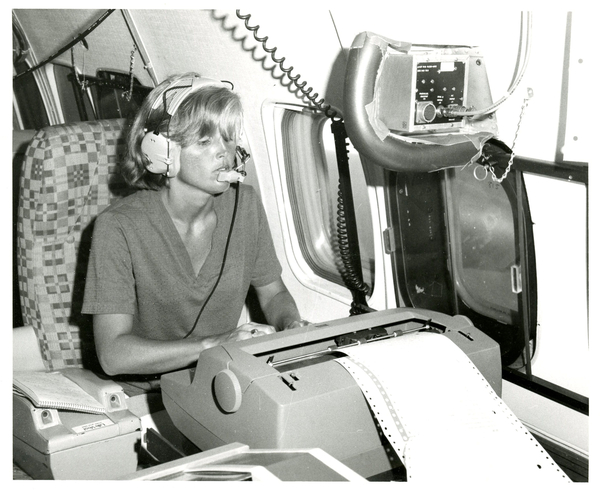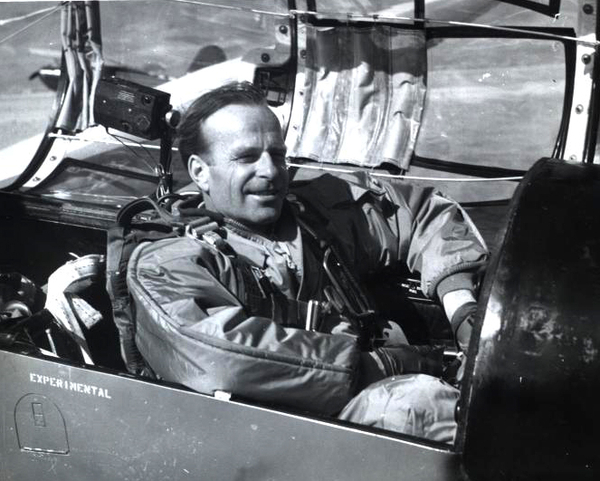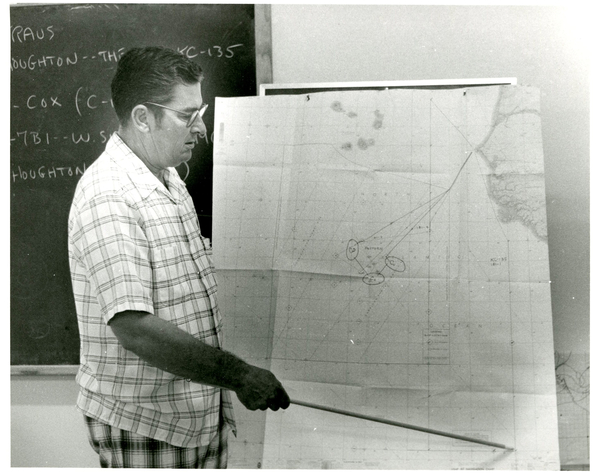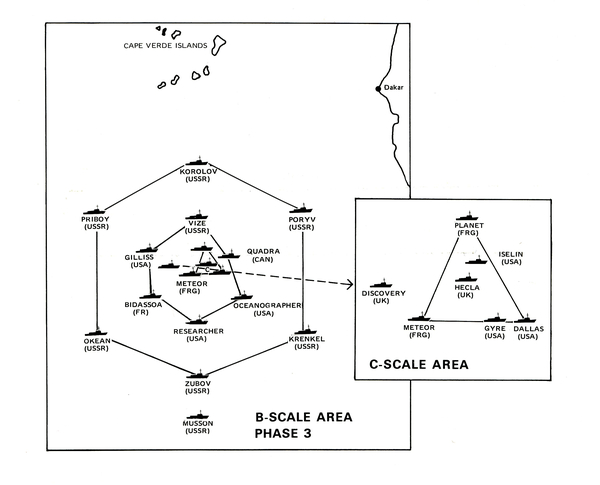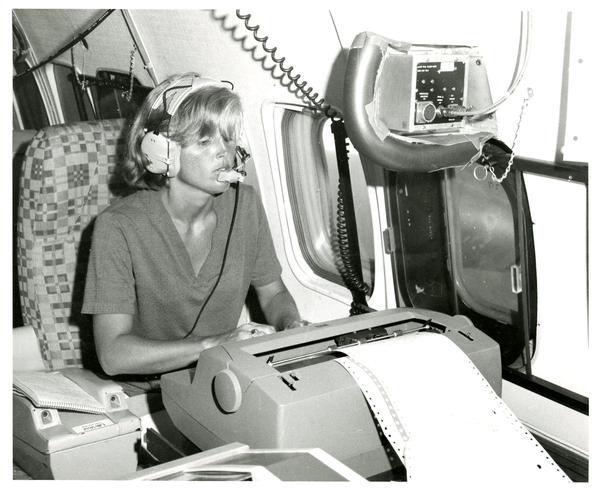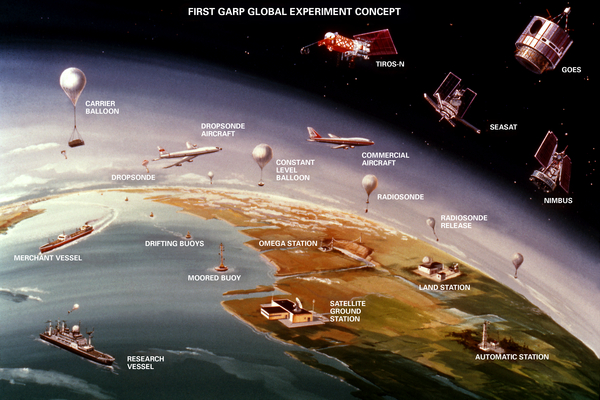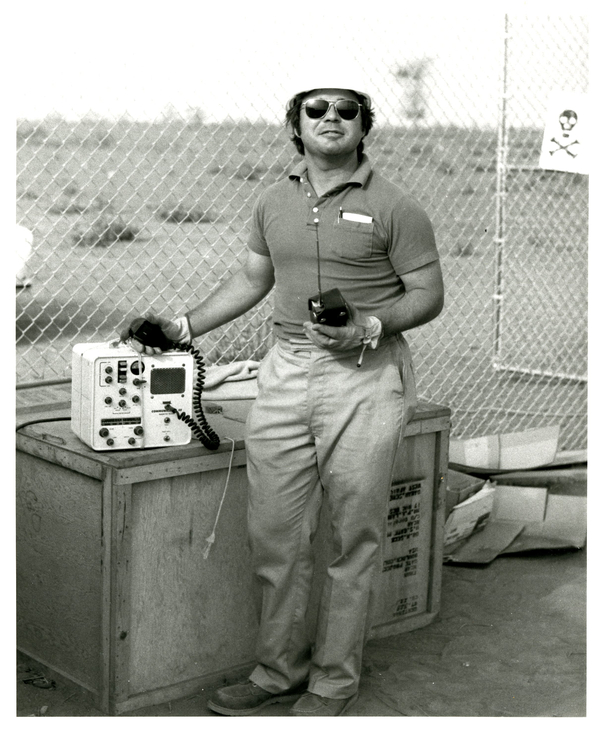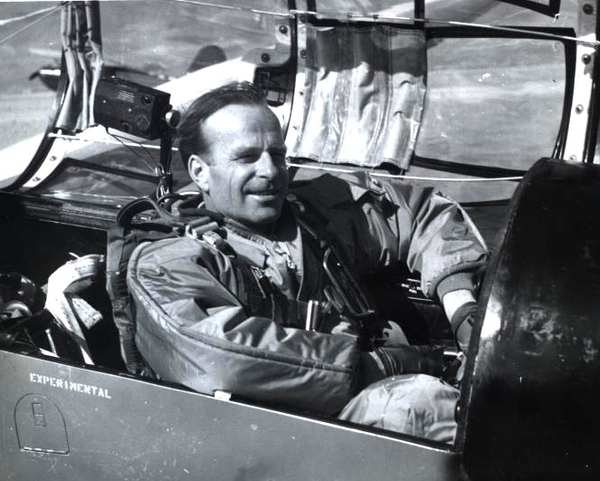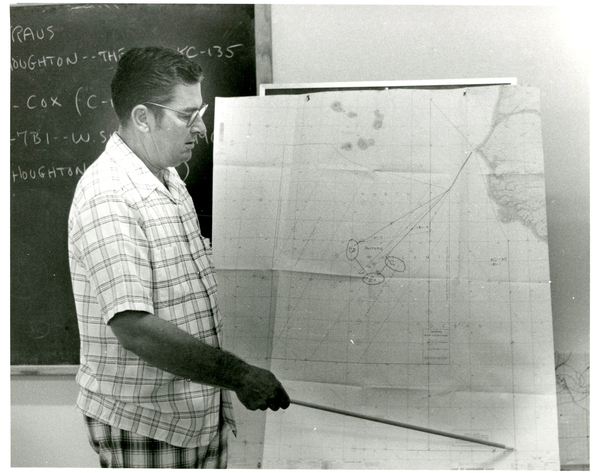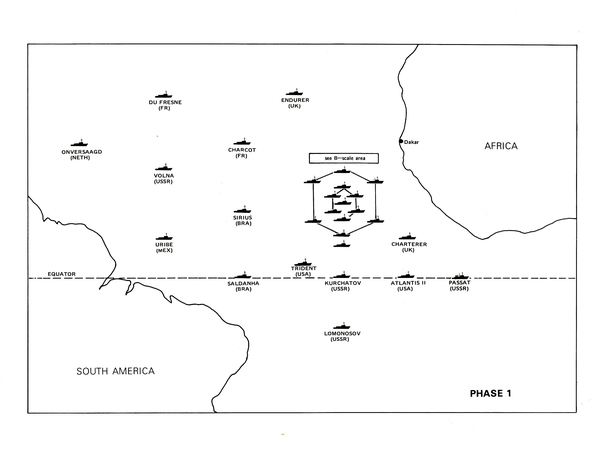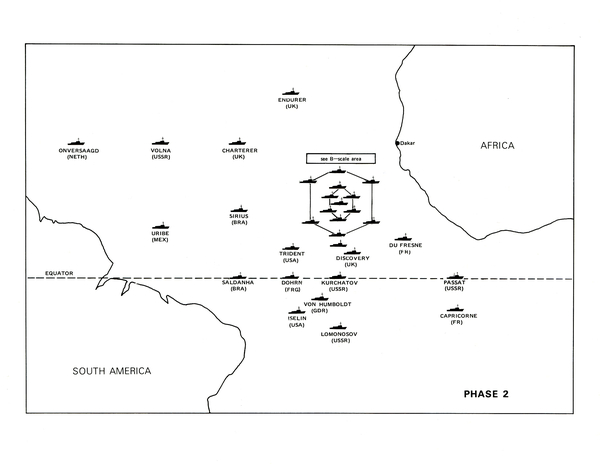GATE Photo Gallery 1
Launched seven years earlier, The Global Atmospheric Research Program carried out its landmark GARP Atlantic Tropical Experiment after years of planning, orchestrated largely by UCAR, among participants worldwide. GATE established UCAR as an organizer of large initiatives involving the global community of atmospheric and related sciences. In 1978-79, the first GARP Global Experiment (depicted here) studied the global atmosperhic circulation and related weather systems.
Donna Johnson on a GATE research aircraft.
Dr. Henry Gertzman of the National Center for Atmospheric Research, Boulder, Colo., prepares to trip switch marking passage of plan past calibration tower at Thies, Senegal. Aircraft instruments in GATE project are calibrated to assure accuracy.
A record-setting glider pilot, Joachim Kuettner used these aircraft as atmospheric sensing tools for decades. Here he is shown piloting a research glider in the 1950s. Kuettner (1909-2011) was a German-American scientist who worked in the U.S. space program, including the Mercury Redstone and Apollo projects. Later Kuettner coordinated and planned international atmospheric field studies, among them the landmark Global Atmospheric Research Program's Atlantic Tropical Experiment (GATE). In 1994 he joined the University Corporation for Atmospheric Research when the National Science Foundation awarded him the UCAR Distinguished Chair for Atmospheric Science and International Research. An active investigator into his 90s, Kuettner took part in the California-based T-REX field project in 2006. Shortly before his death in 2011, the Federal Republic of Germany presented Kuettner with the Officer's Cross of the Order of Merit, one of Germany's highest civilian honors.
Onial Thomas of Camp Springs, MD., of GATE aviation operations, shows proposed track of KC 135 dropsonde flight over the Atlantic.
 |
 |
Intensive array of GATE vessels concentrated in the eastern Atlantic to study tropical cumulus clouds and cloud clusters during the first and second GATE observing periods (left), and small-scale weather and ocean phenomena during the third GATE observing period (right).
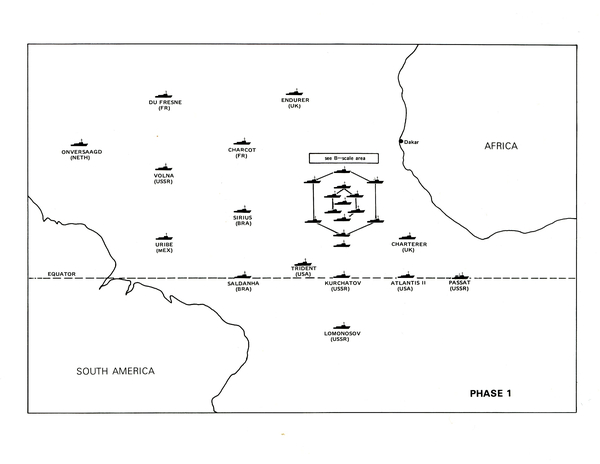 |
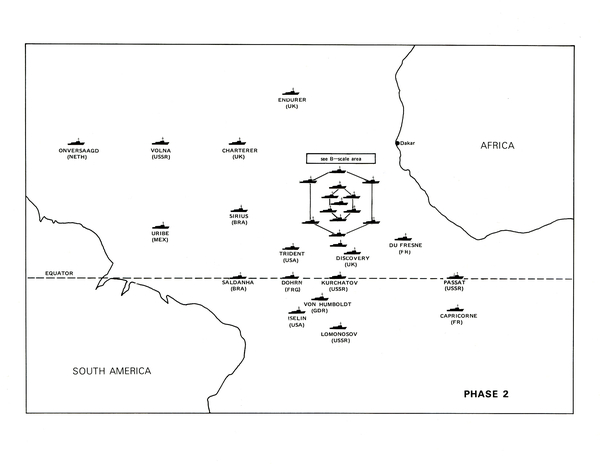 |
Array of A-scale ships during the first and second experimental periods of GATE.
GATE Publications
Data Access
Additional GATE Data Holdings
- NCAR/RDA GATE Aircraft Observations for June to September 1974 (NetCDF)
- NCAR/RDA GATE Commercial and Research Aircraft Observations
- NCAR/RDA Krishnamurti's GATE Tropical 300mb, 250mb, and 200mb Wind
- NCAR/RDA GATE Ship Radar, June to September 1974
- NCAR/RDA GATE Ship Quadra Full Resolution Radar, June to September 1974
- NCAR/RDA GATE ASECNA African Daily Precipitation for 1974
- NCAR/RDA GARP Global Upper Air and Surface Observations for June 1970
- NCAR/RDA GATE Global Upper Air and Surface Observations, June to September 1974
- NCAR/RDA Miscellaneous GATE Surface and Upper Air Data, 1974jun-1974sep
- NCDC GATE non-digital Data
GATE Presentations
GATE Data Documentation
GATE Documents
GATE Photos & Videos
- NCAR Archive: Films and Audio Recordings, 1956-1988
- NCAR|UCAR Image & Multimedia Gallery
- GATE Project: General Photo Gallery
- GATE Project: Peggy LeMone Photo Gallery
- NOAA GATE Promotion Video
- NCAR|UCAR B38 GATE to World Weather 16mm Video
- NCAR|UCAR GATE B51 Winds of the Gate 1974 16mm Video
- NCAR|UCAR PJK B6 GARP ATE VHS Video
